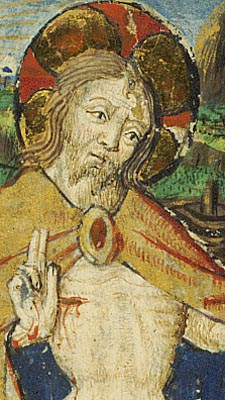
Private Prayer
![]()
The Christian Church fostered private devotion as well as communal prayer.
Priests, monks, and nuns recited the Divine Office using breviaries, and
laypersons recited shorter prayers using books of hours. The latter referred
to the eight canonical hours, that is, the eight times each day when Christians
were supposed to pause for prayer: Matins, Lauds, Prime, Terce, Sext,
None, Vespers, and Compline. The most popular sequence, in honor of Mary
the Mother of God, was known as the Hours of the Virgin. It was often
accompanied in prayerbooks by two other canonical sequences of prayer–the
Hours of the Cross and the Hours of the Holy Spirit.
Books of hours constituted the dominant form of private prayer for laypersons from the 13th to the 16th centuries. Thus these little books were in high demand for 300 years, and were illustrated to satisfy buyers, who included the bourgeois as well as the nobility. Illuminations gave readers visual images to help them focus on the theme of a prayer, and they also served as bookmarks. Most books of hours were written in Latin, although in the Netherlands during the 15th and 16th centuries they were written in the Dutch vernacular.

Copyright
© 2002 Division of Rare & Manuscript
Collections
2B Carl A. Kroch Library, Cornell University, Ithaca, NY, 14853
Phone Number: (607) 255-3530. Fax Number: (607) 255-9524
For
reference questions, send mail to:
rareref@cornell.edu
If you have questions or comments about the site, send mail to: webmaster.